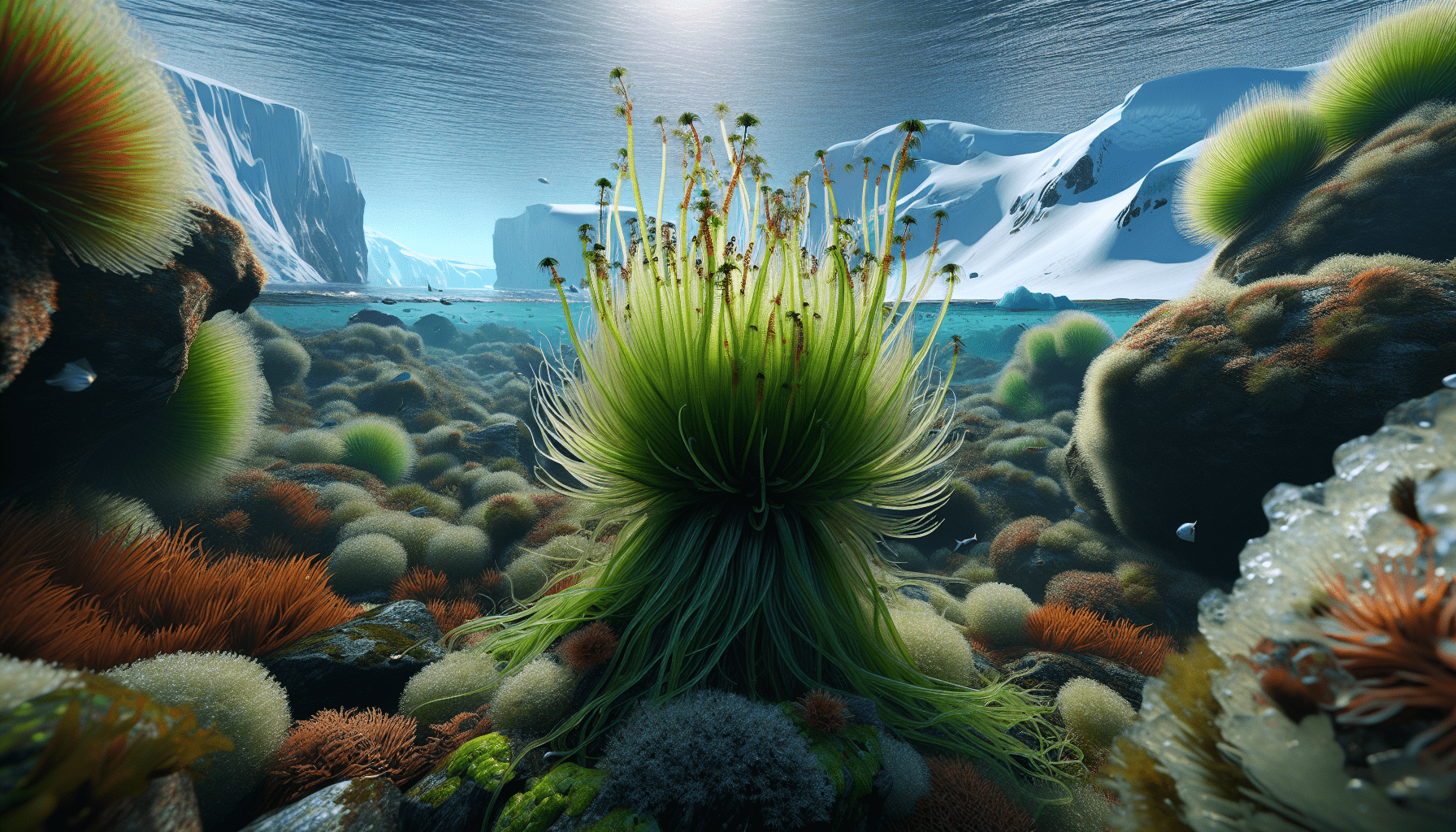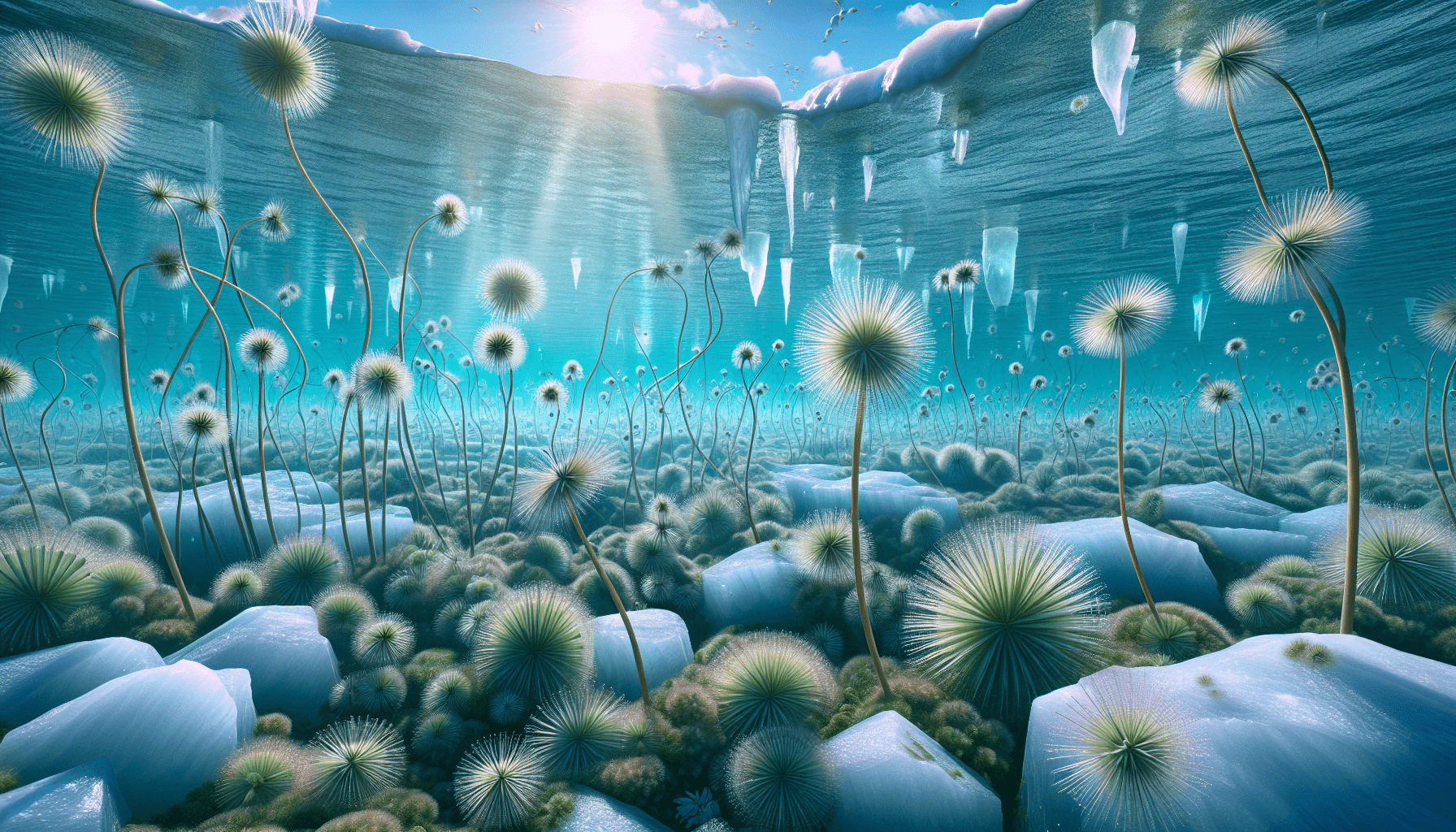“Exploring the realm of underwater flora, one cannot remain indifferent to the unique presence of a humble aquatic weed, the Callitrichaceae’s family member – Callitriche Antarctica. This article will embark upon an immersive journey of understanding this particular weed, its characteristics and transformation as you experience the intricacies of underwater botany. You will navigate through information on its natural habitat, growth patterns, aquatic relevance and ecological implications. Brace yourself, as you are about to acquaint yourself with the lesser-known yet fascinating world of the aquatic weed, Callitriche Antarctica.”

Overview of Callitriche Antarctica
Callitriche Antarctica is a distinct species of aquatic plant commonly found in the southern hemisphere. As a type of water-starwort, this plant belongs to the plant genus Callitriche, characterized by its aquatic or semi-aquatic nature. Unlike most other vegetation, Callitriche Antarctica thrives best in the aquatic environment, making it an interesting subject for study.
Common names and synonyms of Callitriche Antarctica
While “Callitriche Antarctica” is the formal scientific name, this plant species does not have many common names due to its specific geographical distribution and lesser-known status. However, within the scientific community, it is commonly known as Antarctic Water Starwort.
Scientific classification of Callitriche Antarctica
In terms of taxonomy, Callitriche Antarctica belongs to the Plantae Kingdom and falls under the Angiosperms clade. It is part of the Eudicots clade and further classified under the Order of the Lamiales. The plant belongs to the Plantaginaceae family and the Callitriche genus.
Habitat and Distribution
Location occurrence of Callitriche Antarctica
Callitriche Antarctica, as the name suggests, is predominantly found in the Antarctic region. Still, its distribution is not restricted to this area. It can be found in several subantarctic islands and several South American regions, demonstrating its resilience to cold temperatures and harsh conditions.
Preferred environmental conditions for growth
Callitriche Antarctica is well-adapted to frigid environments. It thrives in cold, polar regions where the temperature is often below freezing. It prefers damp, water-saturated soils around ponds, ditches and shallow bodies of water where light can reach the plant’s base.
Physical Characteristics
Description of the plant’s appearance
Callitriche Antarctica is a small, delicate plant with a slender stem. The leaves are opposite, thin, and lanceolate in shape. They have a bright green colour, which makes them visible even under the water surface. Unique features include the linear underwater leaves and more broadly ovate floating leaves, allowing the plant to adapt to its water-bound existence.
Growth habit and plant structure
The growth habit of Callitriche Antarctica is a combination of submerged and emergent growth. The plant has creeping stems that root at the nodes, enabling it to effectively colonize the aquatic environment. Its plant structure is adapted for both aquatic and semi-aquatic living, exhibiting heterophylly – a rare phenomenon where a plant has two distinctly different leaf types on the same plant.

Life Cycle and Reproduction
Details of Callitriche Antarctica’s life cycle
The life cycle of Callitriche Antarctica is yearly. It begins its growth cycle in the onset of the colder seasons, continuing growth and maturation into the warmer months. It’s in these warmer months that the plant flowers and subsequently produces fruit, ending its life cycle.
Reproductive strategy and propagation methods
Propagation of Callitriche Antarctica occurs via seeds, which are dispersed by the moving water currents in its aquatic habitat. The plant also facilitates vegetative reproduction, where fragments of the plant body, usually stems or roots, break off and develop into new plants.
Value to Ecosystem
Role in food web as a source of nutrition for aquatic life
Callitriche Antarctica serves as an essential source of nutrition for many forms of aquatic life, from insects to small fish. Additionally, it offers a suitable environment for multiple species of microorganisms, thereby increasing the biodiversity of its habitat.
Contribution to habitat structuring in aquatic environments
Beyond its role in the food web, Callitriche Antarctica also contributes significantly to habitat structuring. The dense mats it forms offer shelter for various aquatic organisms, providing a safe breeding ground and refuge from predators.
Impact on Human Activities
Potential benefits and uses for humans
While there’s limited knowledge about the direct benefits of Callitriche Antarctica to human activities, its capacity to improve water quality in its habitats could have potential implications for water management and conservation efforts.
Negative impacts on human activities if any
As it is an aquatic plant, Callitriche Antarctica could potentially impact human activities if it proliferates excessively, leading to imbalances in the aquatic ecosystem that might indirectly affect activities such as fishing or aquatic recreation.
Management and Control Strategies
Ways to prevent or control the spread of Callitriche Antarctica
Control of Callitriche Antarctica involves various strategies, including regular monitoring of water bodies for early identification and removal. The physical removal of the plant could also be beneficial in controlling its spread, especially in smaller water bodies.
Recommendations for handling during weed management
When handling Callitriche Antarctica during weed management, it’s essential to ensure that all plant fragments are removed and properly disposed of to prevent further spread. Early intervention and continual monitoring are effective strategies for management.
Factors Influencing its Growth and Spread
Impact of environmental conditions
The growth and spread of Callitriche Antarctica are significantly influenced by environmental conditions. Cold temperatures, high light availability, and waterlogged soils provide ideal conditions for its growth.
Influence of other plant species or organisms
The presence of other plant species or organisms can also affect the growth of Callitriche Antarctica. Competition for space and nutrients can influence its capacity to proliferate effectively.
Biochemical Properties and Adaptations
Specific adaptations for survival in aquatic environments
Callitriche Antarctica has evolved several adaptations that enable it to survive in aquatic environments. Heterophylly allows it to maximize photosynthesis above and below the water surface, and its network of slender stems allows it to effectively absorb nutrients from water.
Any special biochemical features of the plant
While much remains unknown about the biochemical properties of Callitriche Antarctica, it shares common features with other water starworts, including high concentrations of tannins and alkaloids, which can have antimicrobial and antifeedant properties.
Future Research Directions
Potential areas of research for better understanding and management
Key areas for future research include a more in-depth understanding of the plant’s biochemical properties and how they contribute to its survival and growth. Such knowledge could provide valuable insight into new methods to control or harness the benefits of this plant.
Predictions or concerns for the plant’s future
Given the changing global climate, the survival and spread of Callitriche Antarctica could be significantly affected. Research on how these changes might affect the plant could contribute to the preservation and conservation of aquatic ecosystems where this plant plays a vital role.